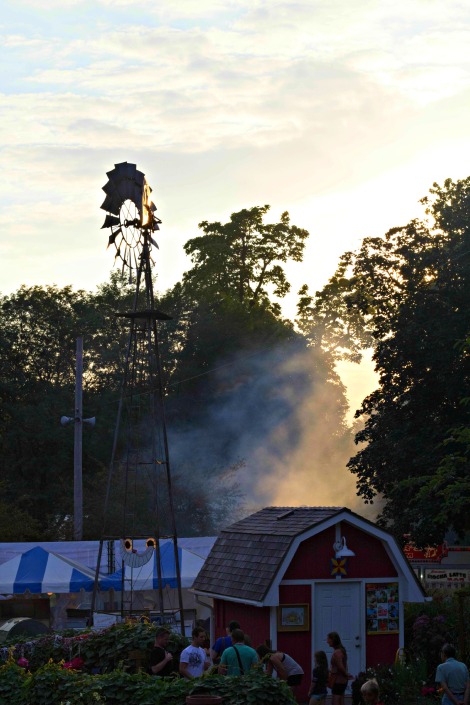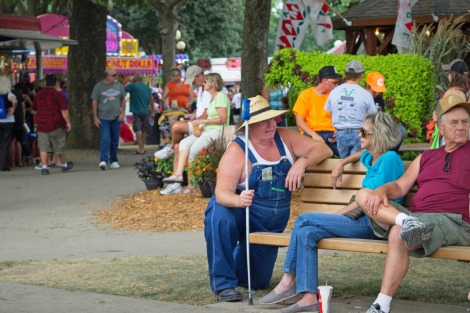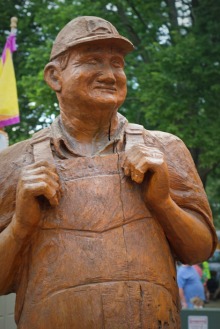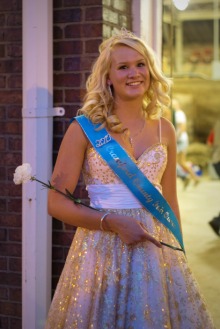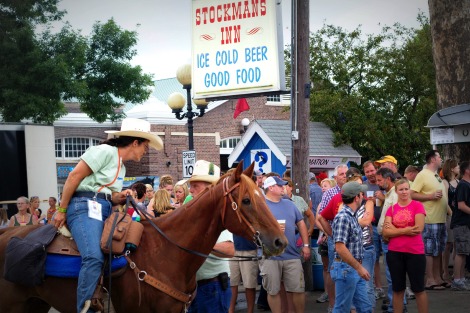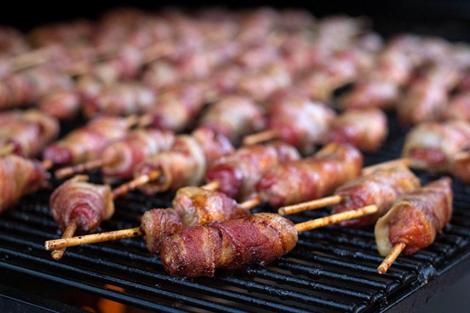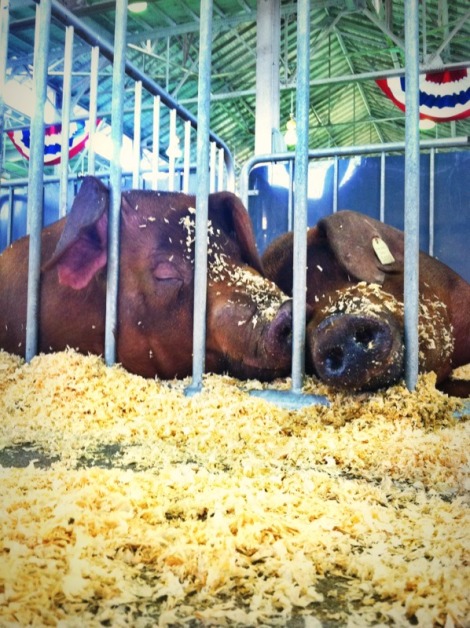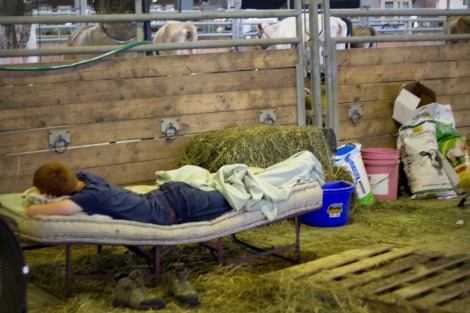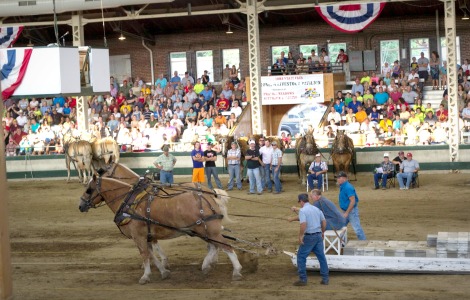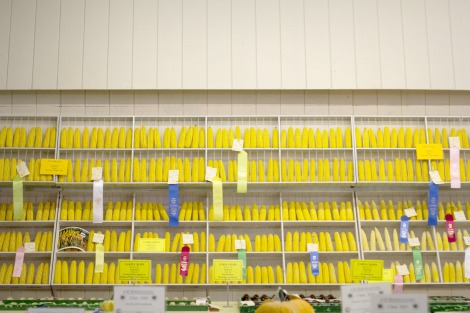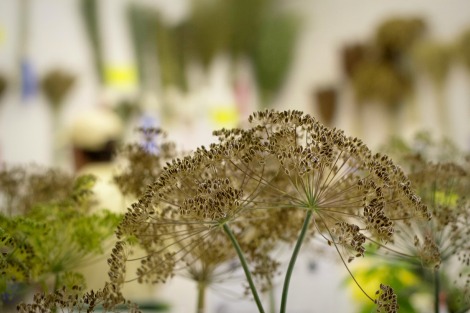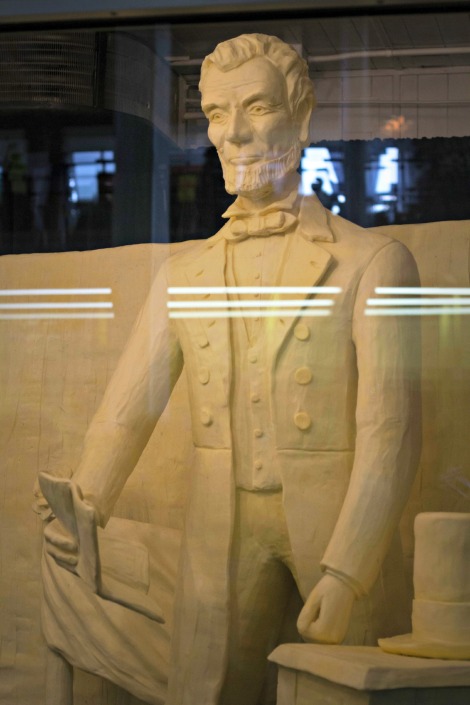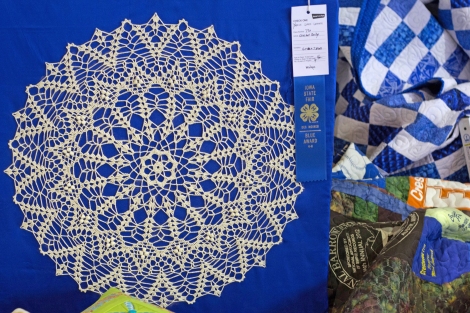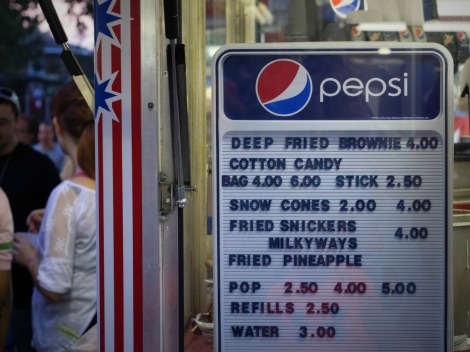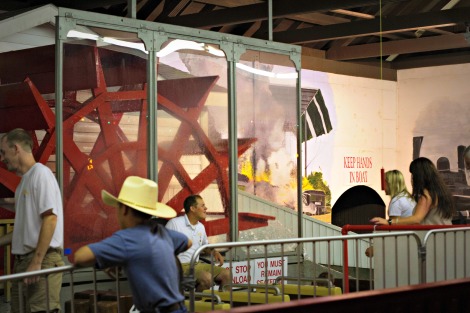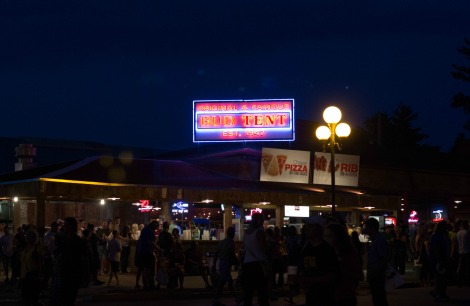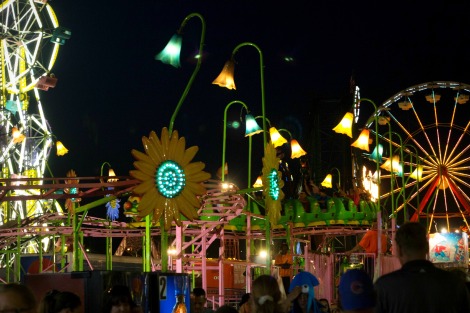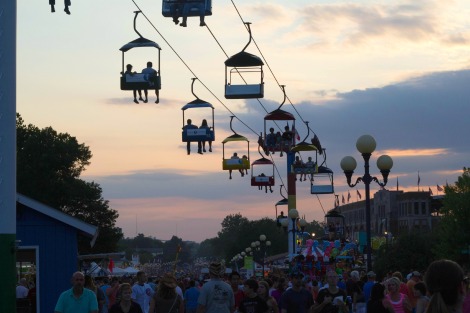“I can hear ’em callin’ hogs in the clear Ioway air, I can sniff the fragrant whiff of an Ioway rose!” So begins the theme to State Fair, the 1945 film devoted to the Iowa tradition. Each of the 50 states has a fair, and Iowa’s is consistently one of the nation’s most impressive. The fair is the largest event in the state of Iowa, thus a fitting occasion for my first visit to the Hawkeye State and my first state fair experience.
Iowa’s state fair dates back to 1854, when it was located in Fairfield. The fair has been located at its present 445 acre grounds in Des Moines for the last 129 years. The fairgrounds are listed on the National Register of Historic Places with many of the American exposition-style architecture buildings pre-dating WWI.
Yet the grounds are just one element of the eleven day festivities. The bustling atmosphere is in constant flux with different competitions and entertainment scheduled daily. One day’s hog calling contest transitions into the next’s lumberjack tournament. Drive in from the country to see big name musical acts or root for your county’s contestant in the State Fair Queen pageant.
The Avenue of Breeds is an attraction that features many unique breeds of horses, hogs, cattle, and other livestock all in one place. Yet the same name might be adopted for the fair’s midway. The event attracts a spectrum of visitors from proud Iowans to travelers drawn to the internationally renown agricultural celebration. After all, it is one of the 1,000 places to see before you die. Amid the flashing lights, sounds of carnival barkers and the distant screams of thrill seekers, the wafting aromas of fried goodness and scent of animals passing on their way to a show, you’ll find all of the typical trappings of Americana in festival mode.
Yet some factors set the Iowa State Fair experience apart for me from dozens of Midwest fairs or Chicago street fests. My main agenda for the fair was to ingest all the fried bounty Iowa offered, including some of the 64 varieties of food on a stick! The bacon wrapped riblet on-a-stick sizzled its way to the top of our list. Check out my favorite fair food and drink and learn what a snuff cannon is in this article.
According to the fair’s website, the Iowa State Fair boasts the largest state fair foods department with nearly 200 food stands. Pork reigns supreme in this state, and over 5,000 pork chops are consumed daily at the fair. We sampled our fair share of piggy products with great result, while we found the beef vendors scarce and less impressive.
The extent of my livestock exposure is limited to recognizing breeds like Duroc or Berkshire on the menus of “nose to tail, farm to table” restaurants in the city. Fortunately, one of my companions grew up showing hogs at her county fair in Ohio and enlightened us as we moved between barns encountering a diverse range of breeds while the August sun filtered through the beams overhead.
One expects to see cattle (beef and dairy), swine, and horses, but the unexpected appearance of blue-ribbon ostriches and rabbits is a delightful surprise. The fair is a hectic enterprise, so you may find the sheep have already been herded home from their barn, their musty trace in the air and prize-winning wool displayed in bags. Families hang around their animal’s stall, preparing for the show they’ve waited for all year by straightening their own hair or plaiting ribbons into a pony’s mane.
We were able to see some horses in action during the horse pulling competition. This event entails a team of horses in a harness pulling a weighted sled. The team who can pull the most weight for a short distance wins. Being horse pull novices, we asked another spectator about the competition and training regimen. He explained that the most important factor in this event is teamwork. Competitors train their horse teams together, sometimes for years. I wanted to know how much they could pull. He replied, “A fair amount,” and I decided it was a phrase worth keeping in mind.
Yet it’s not all about animals in a land like Iowa. Just as we were astounded at the number of different types of hog (including a breed called “blue butt”), the spectrum of vegetation in the Agriculture Building was similarly breathtaking. Golden cobs of corn lined proudly along the wall, a shining example of the care and cultivation so many of us depend on. On display were more kinds of pumpkin than I could imagine and tables of herbs I had never heard of. A welcome escape from the animal buildings were rows of fragrantly perfumed roses and divine flower arrangements, whose bouquet was almost overwhelming.
Also located in the Agriculture Building are the infamous butter sculptures. The 2011 film Butter is recommended viewing before a visit to the fair. The butter cow is synonymous with the state fair, and is accompanied by another sculpture whose subject changes yearly. The butter cow is synonymous with the state fair, and is accompanied by a companion sculpture whose subject changes yearly. The fair’s first female butter sculptor, Norma “Duffy” Lyon, did the honors for 46 years before being succeeded by Sarah Pratt. This year’s, a sculpture of Abraham Lincoln commemorated the 100th anniversary of the Lincoln Highway. Yet the beloved tradition is not without controversy. Just days after our visit, the butter cow was vandalized with red paint by animal liberation activists.
The 4-H exhibits were another highlight, ranging far beyond the skill sets I had imagined. Alongside more traditional pursuits like needlework and quilting were photography, fashion design, robotics, and even aquaponics.
The marketing campaign for this year’s Iowa State Fair was “Nothing Compares” and after only my first state fair experience I’m inclined to agree. In the 1880’s, historian James Wilson said, “One of the most valuable effects of the State Fair is the fraternizing, humanizing consequences of bringing our people together…” The gathering of all different breeds of vegetable, animal, inevitably results in learning. What did we gain? A fair amount.
Admission: Adults $12, Children $5, Children Age 5 & Under are Free

Jessica Mlinaric founded Urban Explorer in 2010 to inspire curious travelers by highlighting history, culture, and hidden gems in Chicago and beyond. She is the author of ‘Secret Chicago’ and ‘Chicago Scavenger,’ and she has contributed to several travel guidebooks. Jessica has visited 20+ countries and 30+ U.S. states. She has more than 16 years of experience as a marketing strategist and works as a freelance writer and photographer.


